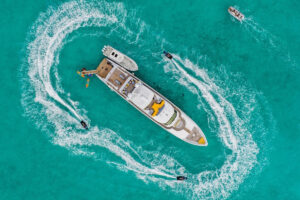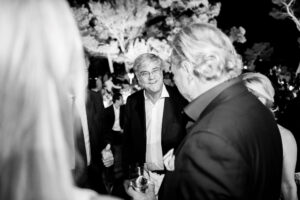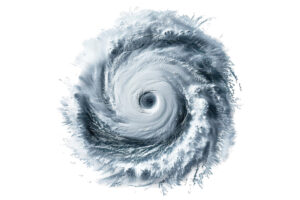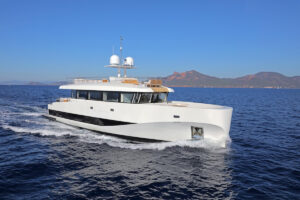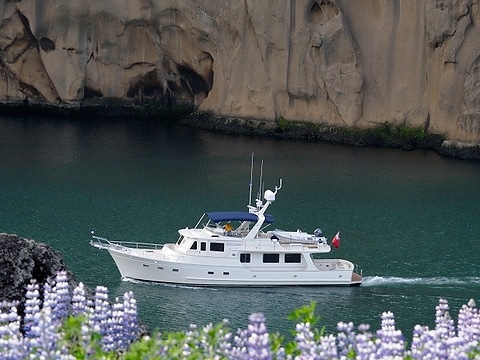
Entering Heimaey Harbor
Days 11 – 13- Chris, Tony’s captain, checked the weather forecast for the next several days, and determined that we would have satisfactory, although not ideal, conditions if we left Friday by noon. Our intended landfall was the Westman Islands (Vestmannaeyjar) off the south coast of Iceland, 390 miles WNW of Torshavn. One of Chris’ favorite weather sources, buoyweather.com, showed we would have moderate winds of 10 to15 knots out of the NW with seas averaging 6 to 7 feet for the beginning of our 45-hour passage. However, it also showed that the wind would increase to 25-28 knots and seas would build to 10-feet at about the time we would be 90-miles from landfall.
The Fleming 65, a twin-engine, pilothouse motoryacht, is designed and built to handle such conditions, so we headed out to sea understanding that we might be a bit uncomfortable for the last part of our passage. Of course weather forecasts can only predict numerical data. The reality of conditions at sea can be a different matter—as we found out.
Venture II is powered with twin MAN 800-horsepower diesels, and while she can cruise at 17-knots, long distance runs are typically made at an economical and comfortable 8.5 to 10 knots. She carries 1,700 US gallons of fuel and at 8.5 knots burns less than10 gallons per hour, giving her a range of approximately 1,400 miles at that speed.
Leaving Torshavn, we threaded our way between the cliffs of Streymoy and Vagar Islands, hoping to stop and launch the tender to take photos of Venture II against the dramatic landscapes. But the wind roared down the cliffs from a funnel-like effect, directed against the current and causing a nasty, wet chop that would have been a sure camera-killer. We had also hoped to take a short detour to the south, passing by Mykines Island for a view of the puffins against the cliffs, but a heavy cloud cover engulfed the island ruining our second photographic opportunity. Instead, we headed out to sea, setting a course of 290 degrees magnetic for Vestmannaeyjar off the coast of Iceland.
Chris established a watch system of 2 hours on and 6 hours off for the four of us, and we quickly got back into our offshore rhythm of reading, writing, eating, sleeping, sharing sea stories and standing watch. Those who have experienced an offshore passage know the quality of time it can provide. Unless there is an emergency, distractions are few, and having only a limited number of things to do often allows the contemplation of the bigger, more meaningful picture of one’s state-of-affairs. For me, relationships, family, finances and spirituality become much clearer when I am at sea than when I’m at home taking care of the tasks of everyday life.
With the Faroes fading behind us, we were finding the conditions not as favorable as predicted. While the wind was a moderate 14 knots, the seas were 8 to 10 feet and very confused, being mixed in with the large ocean swell. Our log entries described conditions as “very lumpy” for the first eight hours, but by 2100 the wind decreased to 5 knots out of the northwest, and the seas began to flatten, leaving only a gentle ocean swell. The overcast sky became clear, and a photo taken at 2300 shows the sun setting on a beautifully calm ocean. We were making nearly 10 knots, and life was grand, indeed.
By early next morning we had traveled 140 miles. The wind again picked up to 14 knots, now blowing out of the west, and the seas began to build on top of the swell. The skies had turned cloudy, and we passed through several light rain showers. We again looked at our printed weather reports which predicted we would be experiencing worse conditions ahead.
By 1600 the winds were now 20 plus knots WSW, or about 45 degrees off our port bow. Throughout the late afternoon and early evening they steadily increased to more than 30 knots, and the sea conditions gradually built to 8-footers or more. But while their size was not a problem, their direction and shape were. The opposing ocean current created menacing square walls of water off our bow that were breaking on top as Venture II rose to their crests, high on top of the ocean swell, leaving our 135,000 pound ship to fall mercilessly into a huge hole below. More often than not the fall was taken gracefully, with Venture II’s deep forefoot softening the blow. But every once in a while, we experienced a loud, jarring, sickening crash that shook everything in the boat, including our sense of confidence. These are the times when you begin to wonder what the hell you’re doing out here. I confess to thinking, “If I wanted to see Iceland so much, I could have flown there and been in a classy hotel eating a wonderful dinner.”
Of course the other thought that went through everyone’s mind was, “I hope nothing important on the boat breaks.” Luckily, this was a Fleming, known for its quality build. And next to me holding on with both hands was Tony Fleming himself, the man responsible for designing and building these boats for the past 25-years. “Well, this is exactly why we build them the way we do,” he said in his typically understated, British sort of way. As it turned out, nothing but a bottle of beer in the refrigerator was broken. Later, again in his signature British way of expression, Tony gently admonished us for buying bottles instead of cans.
For the next 16 hours we endured snotty conditions, being extra cautious with each movement throughout the boat to prevent falling and twisting or breaking a limb. The stabilizers did a terrific job in keeping Venture II from rolling side to side, but they couldn’t help our violent vertical motion in these steep head seas. We spotted the mainland of Iceland at 0500 and began to see a number of large fishing trawlers coming and going from Vestmannaeyjar, which produces 12% of the nation’s fish catch. At 0700 we saw our intended landfall, and the seas finally began to subside as we got into the lee of this group of islands. On our starboard side we could see the mainland area near Eyjafjallajokull, the sight of the most recent volcano activity that caused so much travel disruption throughout Europe.
Entering Heimaey Harbor, we saw how the volcano eruption in the winter of 1973 actually created an extra-long seawall adding to the protection of the harbor. Without the heroic efforts of the fishing fleet, which not only evacuated the entire population of the island to the mainland, but returned to pump millions of water per day into the advancing lava flow, the harbor would have been sealed forever, and with it the entire lifestyle and livelihood of these resilient, hard-working people.
After tying up among the fishing fleet and meeting the customs agent who welcomed us to Iceland, a shower, hot lunch and cold beer were our rewards for our 400-mile bash to the volcanic world of Vestmannaeyjar.
Stay tuned for our voyage to Reykjavik and more.
For a gallery of images from George Sass, Sr.’s Iceland adventure click here.

